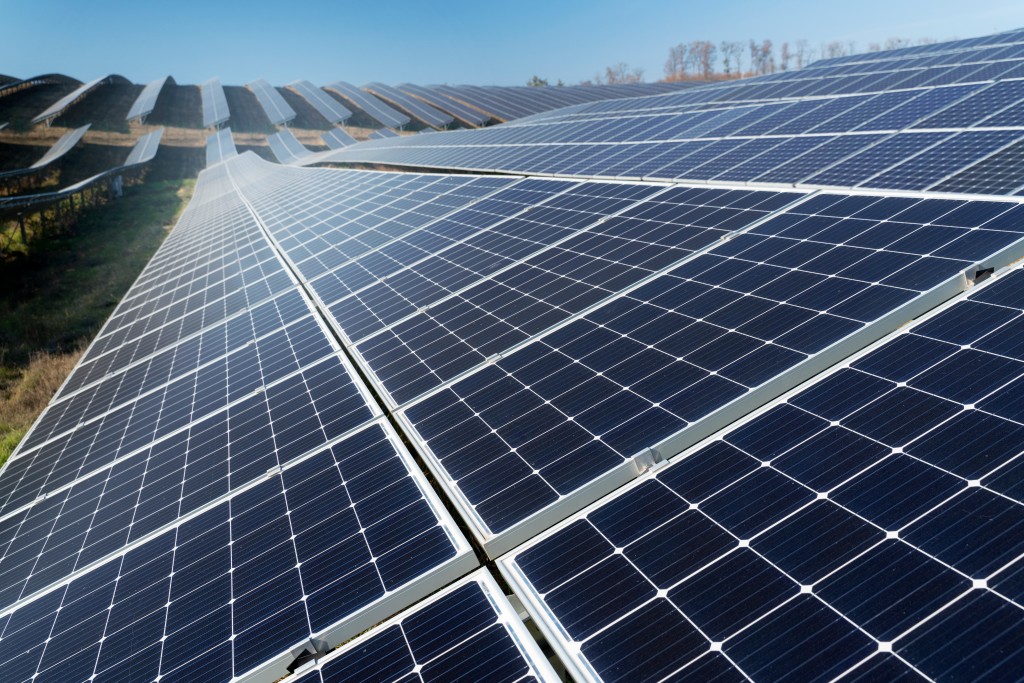Breakthrough: Perovskite Solar Cells with Self-Healing
The world is about to witness a revolution of renewable energy, and the most promising solar technology breakthrough is perovskite solar cells. The new solar cells have raised eyebrows for their ability to revolutionize the solar market by providing greater efficiency, reduced cost, and better manufacturing processes. Recently, researchers have introduced a revolutionary breakthrough: self-healing perovskite solar cells, one that may solve the stability problems plaguing their market viability for so long. This breakthrough narrows the industry’s gap towards the mass production of perovskite solar panels, which may revolutionize the future of clean energy.

What is a Perovskite Solar Cell?
Before diving into the latest solar panel breakthrough, it is important to understand what makes perovskite solar cells unique. A perovskite solar cell refers to a form of photovoltaic cell, which is used to convert sunlight into power through the utilization of a compound of perovskite structure mostly consisting of organo-inorganic hybrid perovskite materials, incorporating elements of lead and tin. Contrary to the traditional silicon-based solar panels, perovskites are processed at low temperatures and therefore easier and cheaper to produce.
Since their discovery, perovskite solar cells have demonstrated rapid improvements in efficiency, competing with conventional silicon solar cells while being lighter, more flexible, and easier to integrate into various surfaces. Reliability has however been their greatest undoing. These cells are usually ruined due to exposure to moisture, oxygen, and long periods under sunlight which reduce their length of survival. Herein self-healing technology is applicable.
The History of Perovskite Solar Cells
The history of perovskite solar cells dates back to the late 2000s when researchers first explored their potential as a photovoltaic material. Based on the very early devices, the efficiencies were very poor like 3%, but then after a decade the scientists have successfully increased the power conversion efficiency (PCE). In 2020, perovskite solar cells will have an efficiency of more than 25%, which makes it one of the quickest developing solar technologies in the history.
In spite of these developments, there was a lot of concern with stability. The early version of perovskite solar cells faded within hours or days, rendering them inapplicable on a long-time basis. Fields of work have since advanced in trying to focus on better methods of encapsulation, materials used, and device design in order to increase durability. The advent of self-healing in the perovskite materials is a turning point in solving this problem.
A Game-Changing Discovery: Self-Healing Perovskite Solar Cells
In a recent study, researchers unveiled a groundbreaking solution: perovskite solar cells with self-healing properties. Adding special molecules (additives) to the perovskite structure, scientists made the material heal itself under the influence of external factors (heat and moisture). The new technology replicates natural self-automatic processes in biological systems and can cause the solar cells to recover efficiency even after experiencing damages.
Perhaps one of the most dramatic things about this technology is that it has affected performance. The researchers had asserted that the solar cells with this technology had 25.1 percent efficiency power conversion rate, which is comparable to the top performing traditional silicon solar cells. Also, these cells proved to have better longevity and they maintained their efficiency within long durations in real life situations.
Why This Solar Panel Breakthrough Matters
There are a couple of reasons why this is notable to development:
- Enhanced Durability: Perovskite solar cells are a more dependable choice for widespread use because of their capacity to self-repair, which extends their lifespan.
- Reduced Costs: The resulting cost of self-healing material and the layer of encapsulation or other costly maintenance would be minimized so that cost of production and installation would be reduced.
- Greater Efficiency: These solar cells with over 25 percent power conversion efficiency had the potential to compete with traditional silicon based solar panels or even outclass them.
- High Adoption Capabilities: Enhanced stability makes the perovskite solar technology potentially applied in multiple applications such as building-integrated photovoltaics (BIPV), wearables, as well as flexible solar modules.
- Sustainability Benefits: The lower energy consumption required for manufacturing perovskite solar cells compared to silicon panels makes them a more environmentally friendly choice.
Conclusion
The discovery of self-healing perovskite solar cells is a significant breakthrough in solar technology. By finally solving the long-term problem of durability without loss of efficiency, this technology opens the door to mass production of perovskite solar panels. With researchers improving and scaling up production, these new solar cells may transform the renewable energy industry in the near future, providing clean, cheap, and efficient solar power to everyone.
With increasing research and business interest developing at a fast pace, it is only a matter of time before perovskite solar cells become a standard solution for world energy requirements. The breakthrough in the solar panel that we are experiencing today could be the door to a more energy-efficient and sustainable future.
Frequently Asked Questions (FAQs)
A perovskite solar cell is a type of photovoltaic device that uses a perovskite-structured compound to absorb sunlight and generate electricity. These cells offer higher efficiency and lower manufacturing costs compared to traditional silicon-based solar panels.
Perovskite solar cells have rapidly improved in efficiency and cost-effectiveness. Their ability to be manufactured using low-temperature processes and their potential for integration into various surfaces make them a promising alternative to traditional solar panels.
The primary challenge with perovskite solar cells has been their durability. Exposure to moisture, oxygen, and UV radiation causes them to degrade quickly, limiting their long-term usability.
The self-healing property is achieved by incorporating molecular additives into the perovskite material. These additives enable the cells to repair themselves when exposed to environmental stressors such as heat and moisture, improving their stability and longevity.
Researchers have reported that self-healing perovskite solar cells can achieve a 25.1% power conversion efficiency, making them comparable to, or even better than, traditional silicon-based solar panels.












